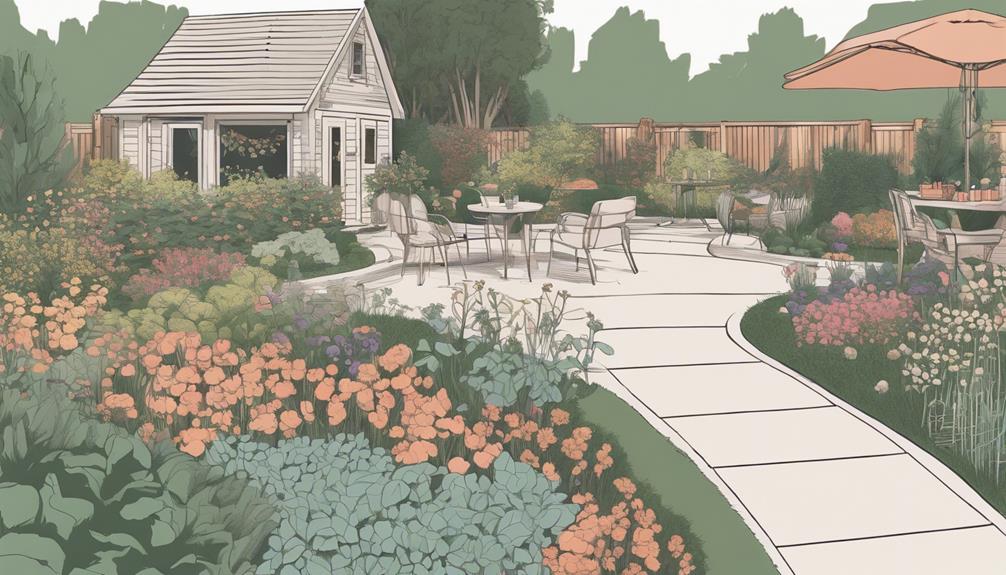See All: Backyard Farming
Free Backyard Farming Webinar…
You can grow food! This free webinar is for people who want the fastest and easiest ways to produce healthy and delicious vegetables, eggs, and meat. Because you know that growing your own food is like printing your own money…
Click Here To Watch The Free Webinar Now!
“Hi there! I’ve recently retired and finally have the time to pursue my passion for gardening. I want to utilize my backyard here in Melbourne to create a small-scale farm. However, I’m a little lost on how to properly design a layout that allows for easy access to everything. Can you provide some guidance on that?” Best, John, Melbourne, Australia.
How Do I Design A Backyard Farm Layout For Easy Access?
Creating a backyard farm layout that is functional and easy to navigate is a fantastic project, John! It’s essential to design your space thoughtfully so that it not only looks great but also helps you manage your farm efficiently. Let’s break down the steps and considerations that will help you create a layout that suits your needs beautifully.
1. Assess Your Space
The first step in designing your backyard farm is to take a good hard look at your available space. Measure the dimensions of your yard accurately. This will help you plan what can fit where and ensure you’re making the most of your space without overcrowding.
Consider the following:
- Sunlight: Observe how sunlight moves across your yard throughout the day. Most fruits and vegetables require at least 6-8 hours of sun daily.
- Water Access: Proximity to a water source is key. Hauling water across the yard isn’t fun, so plan your layout to minimize this effort.
- Soil Quality: Test your soil or have it tested to determine its quality and what amendments might be needed.
2. Create Zones
Think of your farm in zones or sections to better organize various activities and types of plants or animals you want to raise.
- Vegetable Garden Zone: Separate the space where you will grow annual crops like tomatoes, carrots, beans, etc.
- Perennial Plants Zone: Designate areas for plants that come back year after year, such as berry bushes, fruit trees, and herbs.
- Livestock Zone: If you plan to raise chickens or rabbits, allocate a section for their coop and runs. Keep it away from the vegetable garden to prevent any contamination and easy management.
- Composting Zone: Have a spot for compost bins. It’s beneficial to place compost bins near the garden for easy access to enrich the soil.
- Storage Area: You’ll need a place to keep tools, extra pots, soil amendments, etc. Having a shed or a dedicated corner keeps things organized.
3. Pathways for Easy Access
Paths are crucial for easy movement around your farm without trampling your plants or getting muddy feet. Use materials like gravel, wood chips, or stepping stones to create pathways. Make sure they are wide enough for a wheelbarrow to pass through comfortably, typically around 3 feet wide.
4. Raised Beds and Containers
Using raised beds and containers can help you maximize space and improve access, particularly for crops that require particular soil conditions or those sensitive to pests. Raised beds also make it easier to manage soil quality and extend the growing season by warming up earlier in the spring.
- Accessible Height: Aim for raised beds to be 12 to 18 inches high, making it easier on your back and knees.
- Container Choices: Use containers for herbs, strawberries, or even potatoes. They can be moved around to catch optimal sunlight.
5. Vertical Gardening
If space is tight, vertical gardening can be a fantastic option to maximize the use of space along fences or walls. Use trellises, hanging pots, and plant shelves to grow beans, peas, and even tomatoes.
6. Watering Systems
A well-thought-out irrigation system can save time and ensure consistent watering, crucial for plant health. Drip irrigation systems are efficient and reduce water waste. Alternatively, soaker hoses laid out in the beds can also work well.
7. Seasonal Planning
Consider the seasonality of different plants. Designate areas for rotating crops to help with soil fertility and pest management. Sketch out a calendar of when to plant and harvest various crops to keep your farm productive year-round.
8. Aesthetic and Comfort Aspects
Don’t forget to add elements that will make your backyard farm not just functional but also enjoyable. Add a seating area where you can relax and enjoy the fruits of your labor. Incorporate some flowers or decorative plants to make the space inviting.
9. Flexibility and Future Expansion
Design your layout with some flexibility. You might want to change things up in the future as you learn what works best for you or if you decide to expand your operations. Keeping zones modular and movable allows for adjustments down the road.
“Creating a backyard farm layout that is functional and easy to navigate is a fantastic project, John! It’s essential to design your space thoughtfully so that it not only looks great but also helps you manage your farm efficiently. Let’s break down the steps and considerations that will help you create a layout that suits your needs beautifully.” Best, John, Melbourne, Australia.
Final Thoughts…
John, thank you for your question and the opportunity to share some tips on backyard farm layout design. Remember, focusing on easy access, efficient management, and future flexibility will make your farming experience both enjoyable and sustainable. Embrace the journey—happy farming!
Return To: Backyard Farming
Free Backyard Farming Webinar…
Marjory Wildcraft: For 20+ years, Marjory has been a leader in survival & preparedness and wants to show you how to grow food in your backyard farm. This free webinar is for people who want the fastest and easiest ways to produce healthy and delicious vegetables, eggs, and meat. Because you know that growing your own food is like printing your own money…

